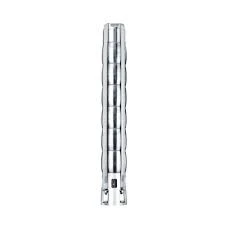Dec . 14, 2024 04:38 Back to list
solar powered submersible pump
The Benefits and Functionality of Solar-Powered Submersible Pumps
In recent years, there has been a notable shift towards sustainable and renewable energy solutions across various sectors, and one of the most impactful innovations in this arena is the solar-powered submersible pump. This technology combines the efficiency of submersible pumps with the inexhaustible power of the sun, offering an eco-friendly alternative for water management in agriculture, households, and industrial applications.
What is a Solar-Powered Submersible Pump?
A solar-powered submersible pump is designed to operate underwater, efficiently lifting water from wells, boreholes, or other sources, powered entirely by solar energy. These pumps consist of a submerged motor coupled to a pump, which allows them to operate efficiently even in deep water environments. The energy generated from solar panels is converted into electricity to power the pump, which can deliver water for various uses, depending on the pump's specifications.
Applications of Solar-Powered Submersible Pumps
1. Agriculture Farmers increasingly adopt solar-powered submersible pumps to irrigate crops without incurring high costs associated with conventional electricity sources. These systems are particularly advantageous in remote areas where electricity grids are unreliable or non-existent. With the capacity to operate continuously during sunny days, these pumps can maintain consistent water supply, enhancing agricultural productivity while reducing dependence on fossil fuels.
2. Domestic Use Many households, especially in rural areas, utilize solar-powered submersible pumps for running water supply systems. These pumps can draw water from deep wells for drinking, cooking, and other household activities. The low operating and maintenance costs associated with solar pumps make them an attractive option for families aiming to save on utility bills.
3. Industrial Applications Various industries, including mining and construction, rely on submersible pumps to manage water resources effectively. Solar-powered systems can be used to dewater construction sites, manage stormwater, or circulate water in cooling processes, all while minimizing operational costs associated with traditional energy sources.
solar powered submersible pump

Advantages of Solar-Powered Submersible Pumps
1. Cost Efficiency The most significant advantage is the reduction in operational costs. Once installed, solar-powered pumps incur little to no electricity costs, leading to substantial savings over time. Although the initial investment in solar panels and the pump may seem daunting, they pay off in the long run through reduced energy expenses.
2. Environmental Friendly Utilizing solar power significantly reduces greenhouse gas emissions. By opting for solar-powered solutions, users contribute to a cleaner environment and help combat climate change.
3. Reliability and Independence The reliance on fossil fuels is diminished, making water management systems more resilient, especially in remote locations. Solar-powered pumps can function independently of the electrical grid, ensuring reliable access to water regardless of the surrounding infrastructure.
4. Low Maintenance These systems are generally robust and require less maintenance than traditional pumps. With no fuel needed and fewer mechanical parts, users benefit from reduced downtime and repair costs.
Conclusion
The rise of solar-powered submersible pumps marks a transformative shift in how we approach water management in a sustainable manner. By harnessing the power of the sun, these pumps provide an efficient, cost-effective, and environmentally conscious solution for various applications. As technology continues to evolve and the effects of climate change become more pronounced, the demand for innovative solutions like solar-powered pumps is likely to rise. Investing in this technology not only promotes sustainability but also paves the way for future advancements in water resource management, making it a vital component in the drive towards a greener planet.
-
Submersible Water Pump: The Efficient 'Power Pioneer' of the Underwater World
NewsJul.01,2025
-
Submersible Pond Pump: The Hidden Guardian of Water Landscape Ecology
NewsJul.01,2025
-
Stainless Well Pump: A Reliable and Durable Pumping Main Force
NewsJul.01,2025
-
Stainless Steel Submersible Pump: An Efficient and Versatile Tool for Underwater Operations
NewsJul.01,2025
-
Deep Well Submersible Pump: An Efficient 'Sucker' of Groundwater Sources
NewsJul.01,2025
-
Deep Water Well Pump: An Efficient 'Sucker' of Groundwater Sources
NewsJul.01,2025
-
 Submersible Water Pump: The Efficient 'Power Pioneer' of the Underwater WorldIn the field of hydraulic equipment, the Submersible Water Pump has become the core equipment for underwater operations and water resource transportation due to its unique design and excellent performance.Detail
Submersible Water Pump: The Efficient 'Power Pioneer' of the Underwater WorldIn the field of hydraulic equipment, the Submersible Water Pump has become the core equipment for underwater operations and water resource transportation due to its unique design and excellent performance.Detail -
 Submersible Pond Pump: The Hidden Guardian of Water Landscape EcologyIn courtyard landscapes, ecological ponds, and even small-scale water conservancy projects, there is a silent yet indispensable equipment - the Submersible Pond Pump.Detail
Submersible Pond Pump: The Hidden Guardian of Water Landscape EcologyIn courtyard landscapes, ecological ponds, and even small-scale water conservancy projects, there is a silent yet indispensable equipment - the Submersible Pond Pump.Detail -
 Stainless Well Pump: A Reliable and Durable Pumping Main ForceIn the field of water resource transportation, Stainless Well Pump has become the core equipment for various pumping scenarios with its excellent performance and reliable quality.Detail
Stainless Well Pump: A Reliable and Durable Pumping Main ForceIn the field of water resource transportation, Stainless Well Pump has become the core equipment for various pumping scenarios with its excellent performance and reliable quality.Detail
